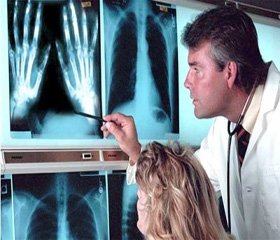Журнал «Здоровье ребенка» 6 (49) 2013
Вернуться к номеру
Features of the debut and current of reactive arthritis in children
Авторы: I.S. Lebec, N.O. Panko
Рубрики: Семейная медицина/Терапия, Педиатрия/Неонатология
Разделы: Клинические исследования
Версия для печати
Introduction
According to current views, to reactive arthritis (ReA) include nonsuppurative inflammatory joint diseases that develop as a result of immune disorders after intestinal and urogenital infections. It is caused by factors such as enterobakterìï (Yersinia enterocolitica, Yersinia pseudotuberculosis, Salmonella enteritidis, Salmonella typhimurium, Shigella flexneri, Shigella sonnei, Shigella Newcastle, Campylobacter jejuni), with acute or persistent urogenital infections (Ureaplama urealiticum, Chlamydia trachomatis at al.). The causes of ReA may also be a respiratory tract infection (pathogen - Mycoplasma pneumoniae, and, especially, Chlamydophila pneumonia). There is evidence of communication with ReA intestinal infection associated with pathogen Clostridium difficile and some parasitic infections [1]. Several studies have demonstrated that the clinical picture of ReA in children varied from oligosymptomatic monoartrit to severe arthritis with systemic manifestations, which usually depends on the infection that caused the disease [2, 3, 4]. The problem of the ReA in children remains relevant, and many issues are not developed, because the manifestation of ReA non-specific and related with other rheumatic diseases, which are also accompanied by arthritis, but have a more adverse course and prognosis.
Results and discussion
Among children with ReА, what were in department of kardiorevmatology, the individuals of female sex was 28, male - 24. The average age of patients on the check up moment composed (8.32 ±1, 0) years. The illness durability on the check up moment was from several weeks to 4 years. Age debut of the disease ranged from 1 to 17 years and averaged (8,1 ± 1,3) years. Beginning ReA in the weeks following factors often preceded by acute respiratory infections, diarrhea, trauma, vaccination, and others. The number of affected joints in the debut of ReA characterized mainly monoartrit ((85,19 ± 3,95) %), rarely defined oligoarthritis ((14,81 ± 3,95) %), patients with polyarthritis were absent. Most children with ReA occurred with the onset of arthritis of the knee ((64,20 ± 5,33) %) and ankle joints ((11,11 ± 3,49) %). Koksyt at onset was observed in (19,75 ± 4,42) % of people. Only in several individuals with ReА made debut from arthritis of the wrist (2,47 ± 1,72) %), what aroused the necessity to named it revmatoid process. In single children ((1,23 ± 1,23) %) first take part of ReA minute joints foots to and shoulder joints.
During the first half of recurrence was observed in the process (36,84 ± 7,83) % of people. After 6 months monoarthritis recorded half of the patients oligoarthritis - at (34,21 ± 7,70) % of people in (15,79 ± 5,92) % formed polyarthritis. In most ((66,7 ± 5,92) %) patients with ReA that the first weeks of therapy was prescribed appropriately, with the control after six months, defined stable remission, and 1/3 - was observed a tendency to chronic.
In the analysis of etiologic factors ReA almost a third of patients ((29,69 ± 5,71) %) identified the presence of mycoplasma infection, (17,46 ± 4,78) % - ureaplasma, (14,04 ± 4,60) % - Chlamydia. Elevated titers were ASL-O (28,40 ± 5,01) % of people. In ReA often also recorded persistent viruses. In most patients ((52,00 ± 9,99) %) found elevated titers of antibodies to herpes simplex virus type II and I, (32,00 ± 9,33) % people – Cytomegalovirus, (23,81 ± 9,29) % - virus by Epstein-Barr. The combination of intracellular bacterial infection with one of these viruses identified in (28,00 ± 8,98)% of patients. Etiology in a lot of patients with ReA remains unspecified. In the past, given the clinical features, the nature of the disease and a positive response to anti-bacterial and anti-inflammatory therapy ReA was diagnosed retrospectively. Most of ReA in a timely adequate treatment ends recovery. The relapse rate ReA increases with duration of illness. For ReA chlamydial etiology characterized by lesions of the large and medium-sized joints of the lower limbs, especially - knee as asymmetric oligoarthritis, which is often accompanied by short-lived morning stiffness and rapid emergence of transient hipomiatrofiy. It is possible to improve laboratory parameters of acute phase inflammation and minimal occurrence of pathological changes on radiographs. Reiter's disease development is not excluded, but this a variant of the ReA is rare. ReA by Mikoplazma inherent in the onset of damage not only to the knee, ankle, but wrist and small joints of the hands, the development of bursitis and hipomiatrofy. Degree of siromukoyid, sialic acid and CRP usually responsive little. ReA, which was accompanied by elevated titers to ASL-O, different polymorphisms articular manifestations of the syndrome and to some extent the similarity of the juvenile rheumatoid arthritis, which complicates differential diagnosis. However, it is characterized by a lack of common complaints, morning stiffness, hipomiatrofiy, deviations regarding laboratory parameters of acute phase inflammation, radiographic abnormalities or progression. Thus, at ReA is not always possible to determine the etiology factor, especially if it is the role of intracellular infection. Clinical manifestations of ReA may vary depending on the etiology.

